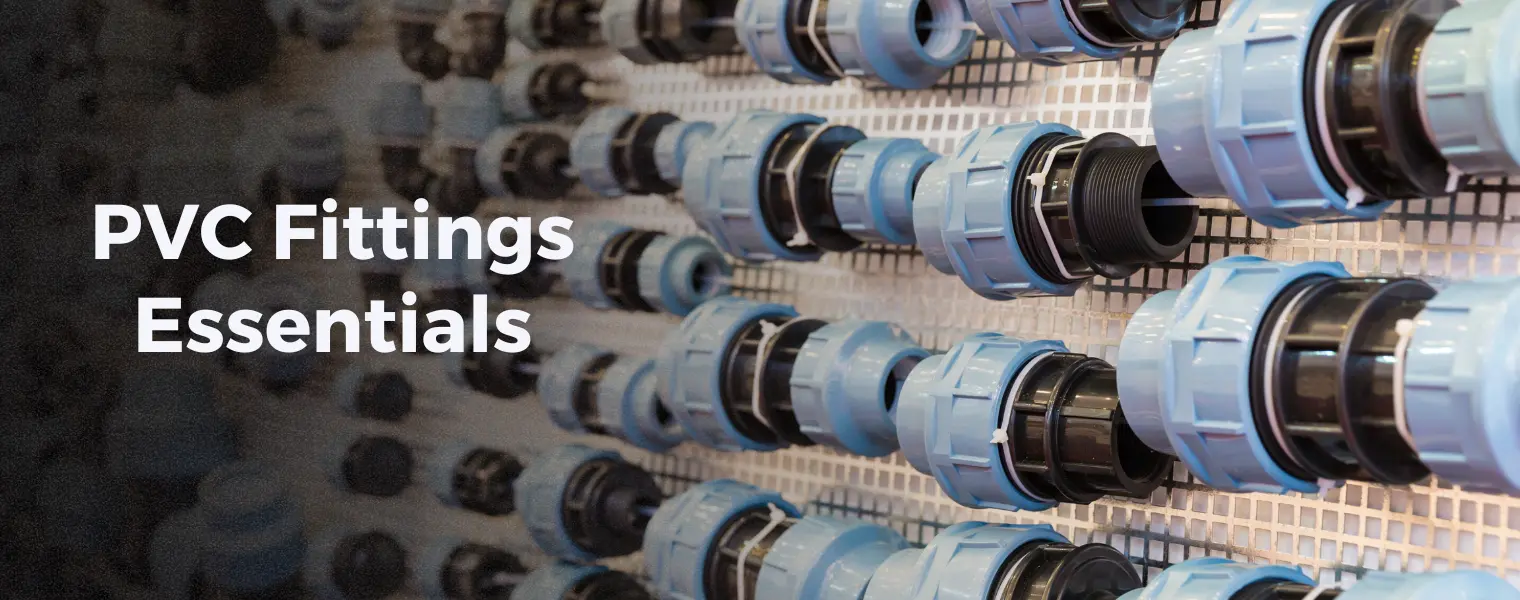
In the world of plumbing, irrigation, and countless other applications, PVC (Polyvinyl Chloride) fittings are the unsung heroes that ensure everything flows smoothly. These unassuming components are integral to creating leak-free connections, adapting pipe sizes, and routing fluids efficiently. Whether you're a seasoned professional or a DIY enthusiast, understanding PVC fittings and their essentials is your key to success in various projects. In this blog, we'll dive into the essential aspects of PVC fittings and equip you with the knowledge you need to master their use.
PVC fittings come in various shapes and sizes, each serving a specific purpose. Here are some common types:
These fittings allow for changes in pipe direction, typically at 90 or 45 degrees.
Tees create a branch connection in a piping system, splitting the flow in two directions.
Couplings are used to join two pieces of PVC pipe, ensuring a secure and watertight connection.
Reducers are used when you need to transition between pipes of different diameters, ensuring a smooth flow.
Adapters are handy for connecting PVC pipes to other materials, such as metal or threaded connections.
Unions provide a detachable joint for easy maintenance or replacement of components in a piping system.
Choosing the correct PVC fittings for your project is crucial. Here are some essential considerations:
Ensure that the fitting matches the size of your PVC pipe for a proper fit.
Select the fitting type that suits your specific needs, whether it's for a corner, a branch, or a connection to another material.
PVC fittings come in different schedules denoting wall thickness. Make sure to match the schedule of the fitting with that of your pipe for compatibility.
Before assembly, clean the pipe ends and fittings thoroughly to remove dirt, grease, and debris.
Apply PVC primer to both the pipe and fitting, followed by PVC cement, to create a strong, chemical bond.
Always adhere to the manufacturer's instructions for the application of primer and cement and allow sufficient curing time.
Dry-fit the components first to ensure they align correctly before applying primer and cement.
Quality is paramount when it comes to PVC fittings. At Polyfab, we take pride in providing high-quality PVC fittings that meet industry standards. Our commitment to excellence means that you can rely on our products for durability, reliability, and performance.
PVC fittings are essential components in various projects, ensuring fluid flow and system integrity. By understanding the essentials of PVC fittings and following best practices for selection and installation, you can confidently tackle your plumbing, irrigation, and piping endeavours. And when you seek dependable PVC fittings, remember that Polyfab is your trusted source for quality solutions. Contact us to know more.